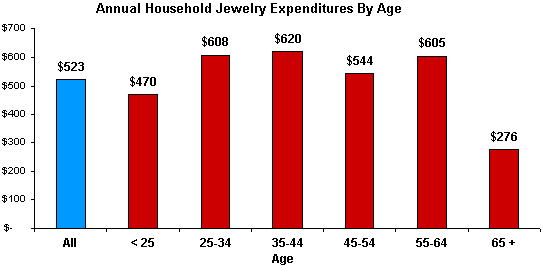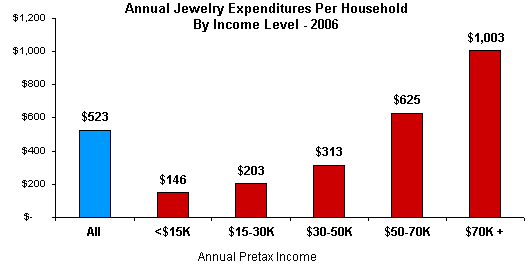IDEX Online Research: Jewelers - Target Female Self-Purchasers, Part 11
September 08, 09
The model family of the 1950s, Dad is the sole earner and Mom is at home cooking three hot meals a day, is hard to be found in the U.S. these days. In this multi-part series, we are looking at what this means for jewelers. The good news: more women than ever before work outside of the home and now have the discretionary income to buy jewelry for themselves. The opportunity: age no longer a factor.
Age Not a Major Determinant in Household Discretionary Income & Jewelry Expenditures
Historically, jewelry expenditures varied substantially by age. In today’s market, age is much less of a determinant of jewelry spending. As the latest data from the Consumer Expenditure Survey shows on the graph below, per household spending on jewelry does not vary significantly by age.

Source: US Dept of Commerce
The most important demographic factor which affects jewelry spending is the income level of a household. The graph below summarizes jewelry expenditures by income levels for American households.

Source: US Dept of Commerce
When discretionary income levels are examined, the same conclusion can be drawn: discretionary income does not vary much by age. Rather, it varies dramatically by the number of wage earners in the family.
The graph below illustrates the disparity in discretionary income levels by age group and total wage earners in the family. Clearly, whenever there are two wage earners, the level of discretionary income in the household rises sharply. Since jewelry is purchased with consumers’ discretionary income, it is important for jewelers to focus on all ages of shoppers who enter their store.
 Source: The Conference Board |